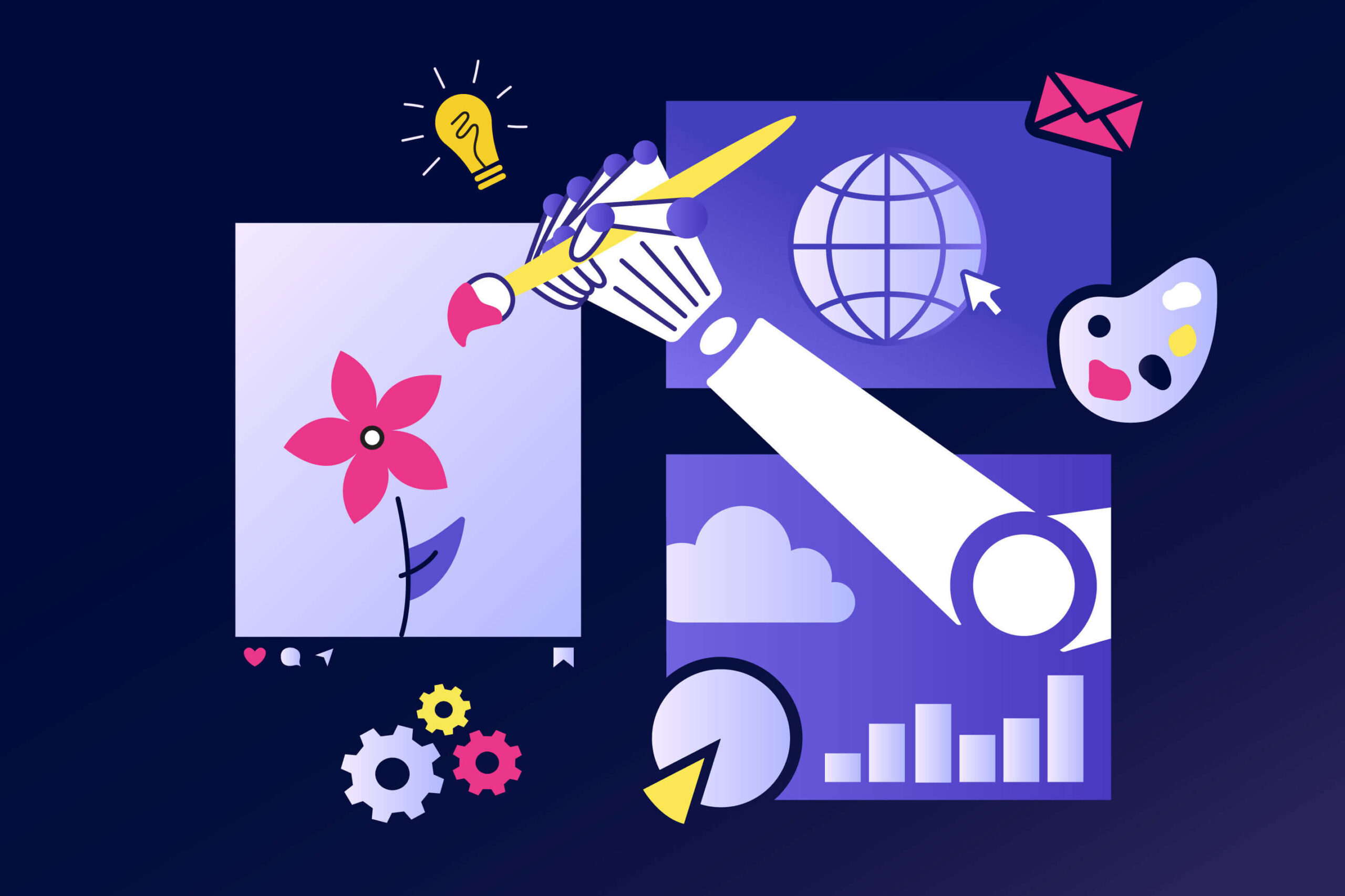
OpenAI’s public release of ChatGPT on November 30, 2022, marked the start of AI’s rapid rise to internet notoriety. This spurred a frenzy of new AI-powered trinkets, many of which are based on GPT-3, the large language model (LLM) that powered the first public iteration of ChatGPT. Most of the new advancements in artificial intelligence fall into the subset of generative AI, which creates new, original content by learning from large datasets.
ChatGPT is still the most popular generative AI application (and the fastest-growing consumer app of all time), but other image-, video-, and audio-generating tools are also rapidly rolling out to the public. Platforms like DALL-E and Midjourney can generate artwork from simple text prompts, and AI-based speech generation apps like Eleven Labs provide the ‘voice’ behind viral synthetic conversations between public figures.
Rewind 6 months to a time when ChatGPT wasn’t ubiquitous. Artificial intelligence might not have been nearly as proficient in text or image generation, but it was already a large part of advertising operations. Take, for example, programmatic media buying. Advertisers and publishers use AI-powered predictive models to segment customers and optimize ad placement in real time.
Agencies have always moved at the speed of technology. At face value, generative AI could complicate that. Whereas tools like programmatic advertising are a trick-up-the-sleeve for marketers, generative AI – more so than ever before – attempts to mimic the outputs of humans who make ads. Yet, AI is still far from autonomous. It can’t work as part of a team, express emotions, or guide clients through a creative solution; however, it can take commands from existing creatives, and it can certainly be a capable muse. So, if the worst use of this technology is for final client work (for several legal reasons that we’ll cover later), the next worst use is none at all.
Some marketers have already entrusted AI to be their creative engine; in January, actor Ryan Reynolds used ChatGPT to write a script for his then-very-own Mint Mobile. Some caveats: this was just a one-off ad, Reynolds disclosed its AI origins, and ChatGPT authorship is the punchline. While the script is undeniably entertaining, it’s more stunt than brand platform, and its timely feature of ChatGPT is a reminder that it relies on, well, the novelty of ChatGPT (and our love of Ryan Reynolds).
Others have found tactful uses of generative AI in brand-building initiatives. The self-proclaimed ‘First AI Generated Campaign’ came from Heinz, who generated ketchup artwork and found that the result always resembled a Heinz bottle, proving the brand’s dominance in the category. NotCo, a plant-based food company, used a combination of AI tools to consider what livestock would look like if farm animals were allowed to reach their full life expectancy.
Still, most brands have been hesitant to use AI as a focal point in marketing. There are cultural justifications – public opinion on AI is mixed, some camps think it’s a fad – as well as ever-evolving legal factors. Three image generation models were the target of a lawsuit from a trio of artists who alleged their artwork had been used to train these models. It’s entirely possible these artists’ work was absent from training data, but it’s also confirmed by Midjourney’s founder that the model was trained on over 5.85 billion text-image pairs, an indeterminate number of which are admittedly copyrighted material. The legal precedent for fair use in training data is still yet to be determined, which should give marketers sufficient reason not to use AI for consumer-facing outputs.
As for Rivers, all of our deliverables are still created by hand and all of our ideas are generated by mind. We don’t plan to change that anytime soon, but we’re still encouraging the team to experiment with generative AI to enhance creativity or accelerate workflows. Where we find AI most helpful is in the messy middle of an idea’s journey, somewhere between conception and production. Broad information synthesis is a strength of conversational chatbots like ChatGPT, which helped us develop a topic sequence for this blog post.
For designers and art directors, tools like Midjourney can stress-test, guide, or amplify concept development in a fraction of the time that just a single mockup could otherwise take. It liberates creatives to tighten up an idea or aesthetic without the burden of production, allowing them to share proof-of-concepts with other team members and just as easily move on if the idea doesn’t resonate.
“It’s like having another designer work for you,” said Nuno Gomes, a senior designer here at Rivers Agency. “And they’re super talented and technically proficient, but they have a loose grip on reality, need lots of supervision, and they tend to hallucinate and give unexpected results.”
Still, the potential is unlimited.
“Sometimes those unexpected results could lead to new ideas,” he added. “It can create complex images with unlimited variations, which wasn’t possible before without a ton of time. Images that require a studio, model, and photographer can now be simulated. It’s like designers have a new voice, because we can show someone what we’re thinking about without putting hours and hours into a mockup.”
Other Sources